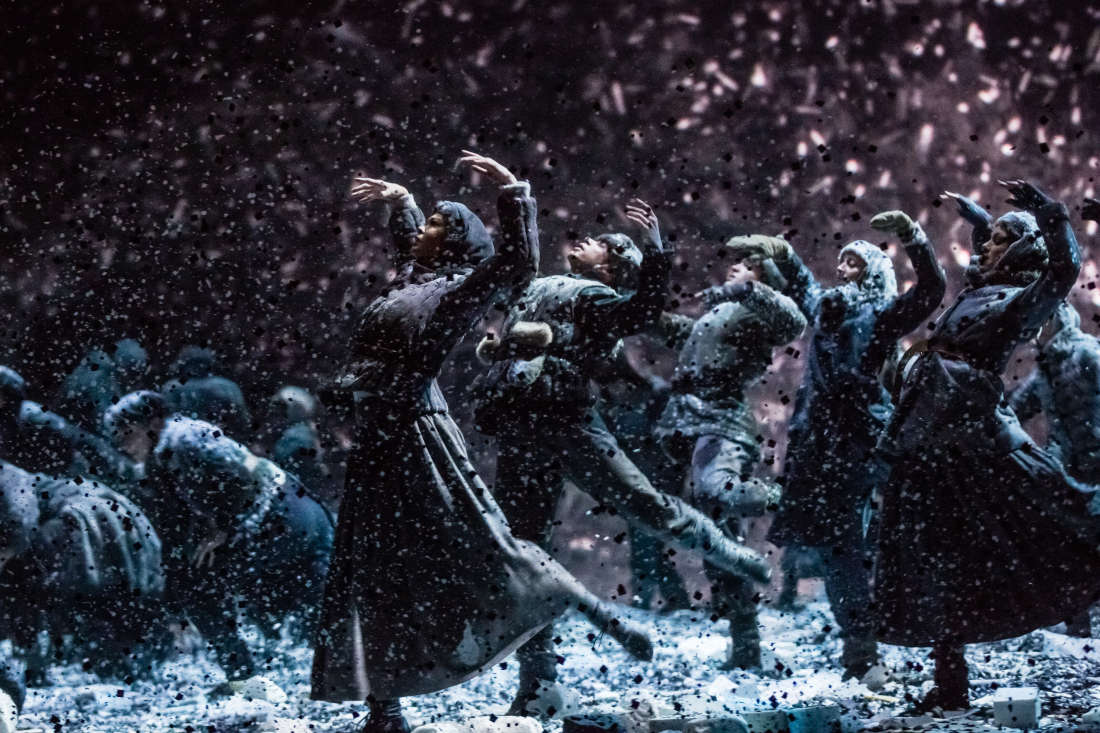Verdi's
Il trovatore is a... an opera. I wanted to write something like "a jolly operatic jaunt into the stereotyped gender-roles of yestercentury" but I don't think that my sarcastic tone carries through sufficiently. So I'll save "jolly" to describe operas which are nonironically jolly, pleasant romances and cross-dressing comedies.
This one is not that.
The music is gorgeous. The
performers were excellent. (Several enthusiastic audience members audibly cried, "Bravo! Bravo!" after particularly emotive arias.) The staging was abstract and stark, which is not my favorite type of visual spectacle. The stage was a bare grey-brown rectangle, out of which a grid of vertical rectangular slabs could be lifted to various heights, surrounded on three sides by giant mirrors. The slabs were used to build the cells in a prison, or suggest a graveyard, or as military foxholes. It was a creative use of monochromatic 3D rectangles to portray a variety of settings. (See
the slideshow here.) The costumes were mostly
also a drab grey-brown, all military fatigues and gypsies wearing rags and dark overcoats. The blocking was rectangular and fixed, too, although this could just have been suggested and accentuated by the stage decorations. (My preference tends more towards staging, choreography, costumes, and sets which could be described as "lush", or "ornate", or magnificently "rococo.")
I loved the music.
I detested the plot. Its overarching theme, reinforced with every scene and sometimes every
line in a scene, was that women are property, to be owned, punished, and exchanged by men. Booooo. It's a historical attitude, sure, and modern performances are literally restricted by the limits of the libretto. But still. Even within the plot, the female lead Leonora tries to use socially-acceptable techniques to control her fate (although not to own herself, never to own herself, remember: women are property, she can at most influence which man owns her). She tries to take vows at a nunnery and is interrupted by not one but
two men (that cursed love triangle) who come to repossess her.
Lots of other plot crap happens. Read
the synopsis if you like; it contains details that are so subtle that they are not even mentioned aloud during the opera, and YMMV based on the starkness and detail-paucity of your particular production. This is one of those plots where if all the characters could just sit down (unarmed) around a table and talk for 5 minutes (or maybe 45 if they're singing instead), the entire plot could be resolved, with no dramatic irony or tension or really much of a hassle at all.
Instead, everyone dies. (Well, almost everyone.)
There, I've spoiled it for you, as much as a 150-year-old opera which follows
all the opera stereotypes can be spoiled. (Perhaps I've spoiled all operas for you: everyone dies at the end! Voilà!)
This post's theme word is makebate, "one who incites quarrels."
Based on historical data, librettists tend to be inflammatory makebates: consider at how many duels, wars, fights, and poisonings they incite.





























